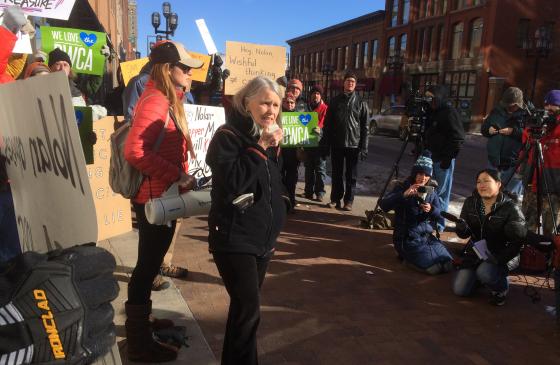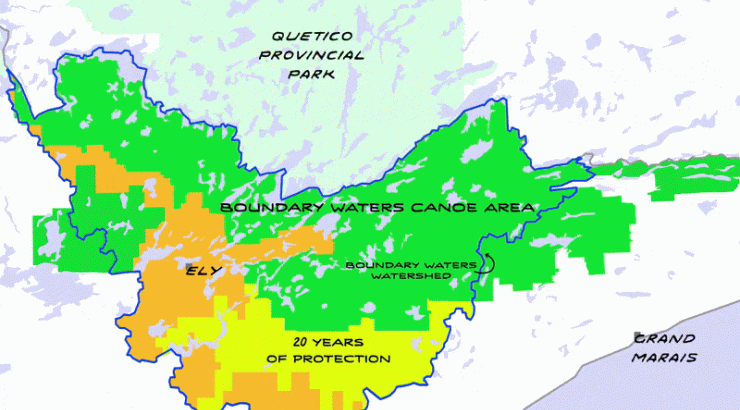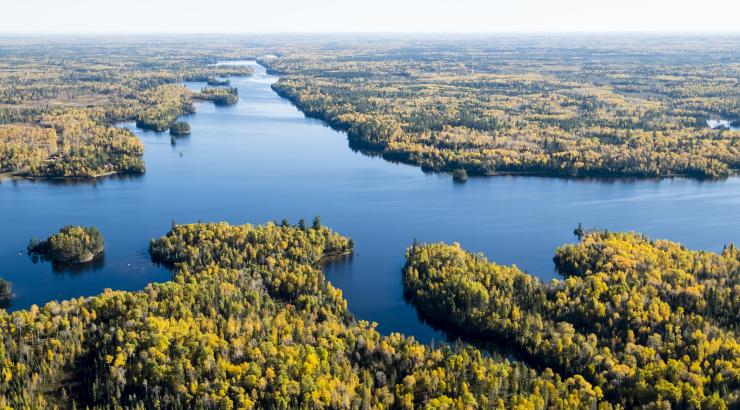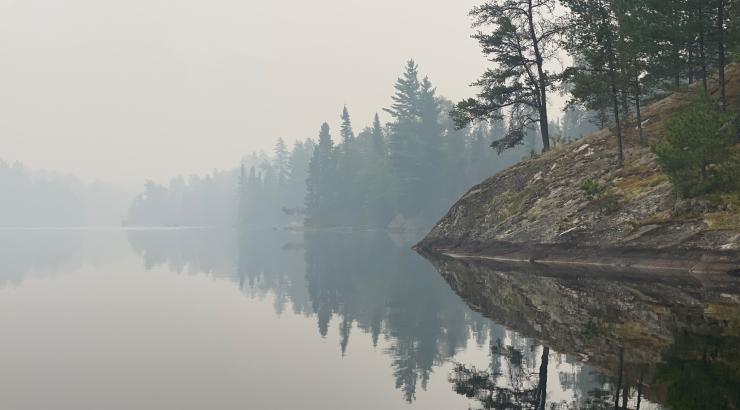Hi everyone,
There has been so much going on recently with the Campaign and the fight to protect the Boundary Waters Canoe Area Wilderness that it can be hard to keep up. Because of this, I wanted to take a few minutes and give everyone a quick update on what’s happening now and how you can help.
What’s Happened so Far
As you know, the Campaign to Save the Boundary Waters works to permanently protect the Boundary Waters from sulfide-ore copper mining. Thanks to the hard work of the Campaign, in January 2017, the Forest Service and the U.S. Bureau of Land Management (BLM) launched a study to determine whether sulfide-ore copper mining in the watershed of the Boundary Waters would create a risk to the Boundary Waters and other Superior National Forest lands. The study, called an Environmental Impact Statement (EIS), is the process provided under federal law to guide a decision by the Secretary of the Interior on whether public lands should be off-limits to mining for twenty years. Twenty years is the maximum period allowed by law unless Congress or the President act to permanently ban mining on these public lands.
Over 126,000 Americans have been involved in the study so far – a record for any EIS in Minnesota history – by providing comments at three listening sessions and in writing, to suggest issues that should be studied. By law, the two-year study will examine the potential environmental, economic and social impacts of sulfide-ore copper mining.
The Threat
Some politicians and the mining industry, including the giant Chilean mining company Antofagasta, have mounted a grave threat to the study and the rights of all Americans. The industry and these politicians – led by Congressmen Rick Nolan and Tom Emmer – don’t think that Americans should have a say in what happens to the Boundary Waters and the Superior National Forest. They want Antofagasta, the owner of Twin Metals, to receive federal mineral leases so it can build a massive mine on vulnerable federal lands next to, and along rivers and lakes that flow directly into, the Boundary Waters. They want to end the study and prohibit any consideration of the Boundary Waters and the effects of pollution, among other things, before giving away our public lands.
Specifically, in the past two months, Congressmen Nolan and Emmer have taken two actions that, if successful, could lead to major and permanent pollution of the Boundary Waters. At the same time, Congresswoman Betty McCollum and other leaders have courageously fought against the efforts to degrade America’s most popular Wilderness.
Emmer/Nolan Amendment
On September 6, 2017, Congressmen Nolan and Emmer added an 11th hour amendment to the omnibus funding bill in the U.S. House of Representatives that would prohibit spending federal dollars in the 2017-2018 federal budget on the study. The omnibus bill funds the entire federal government. Both Congresswoman McCollum and Congressman Paulsen rose in objection to the amendment and submitted testimony into the Congressional Record. With just 24 hours notice before a vote on this treacherous amendment, hundreds of you called the offices of your Representative to oppose the amendment. Nonetheless, the amendment passed on a voice vote as a part of a bundled group of amendments. The omnibus bill won’t likely be considered for a vote until December. We must all work very hard to make sure that this amendment does not get in the final bill, and that Congress does not de-fund the study and deprive Americans of their right to determine the future of the Boundary Waters.
Emmer Bill
In July, Congressman Emmer floated a draft bill for discussion that would grant Antofagasta the right to build its massive mine on Superior National Forest lands in the Boundary Waters watershed. This bill would effectively amend four longstanding bedrock conservation laws for the benefit of one mining company with no ties to Minnesota and with a record of water quality violations, labor strife, and close dealings with politicians. If it became law, Emmer’s bill would block public comment and eliminate review of the environmental, economic or social harm that would likely be the result of this brazen give-away of our public land.
What Can We Do?
To fight these threats, it is critical that we come together and continue to support the Forest Service and the BLM in conducting the two-year study. We must demand a comprehensive and credible review of the ecosystem and the abysmal record of sulfide-ore copper mines, which always pollute waters. We must insist that NO risk to water quality is acceptable.
The threat to the Boundary Waters, and the priceless downstream waters of Quetico Provincial Park and Voyageurs National Park, is very real. It is incumbent on all of us to work together and urge elected officials to fight for the Boundary Waters. We must ensure that the great Boundary Waters region is protected for all people for all time. The time to act is now!
About the Author:
Becky Rom, a retired attorney, is a third generation resident of Ely. She is the daughter of Bill Rom, who owned and operated Ely-based Canoe Country Outfitters for 30 years. Becky worked in the family business and learned at an early age the importance of wild country. She first worked on wilderness preservation when she was a seventh-grader, engaging in public debates on the merits of the bill that became the Wilderness Act. For the past 40 years Becky has worked as a citizen activist on wilderness preservation throughout the United States but she continues to be drawn back home to the Boundary Waters. The Campaign to Save the Boundary Waters is her fourth national campaign to protect the area.



